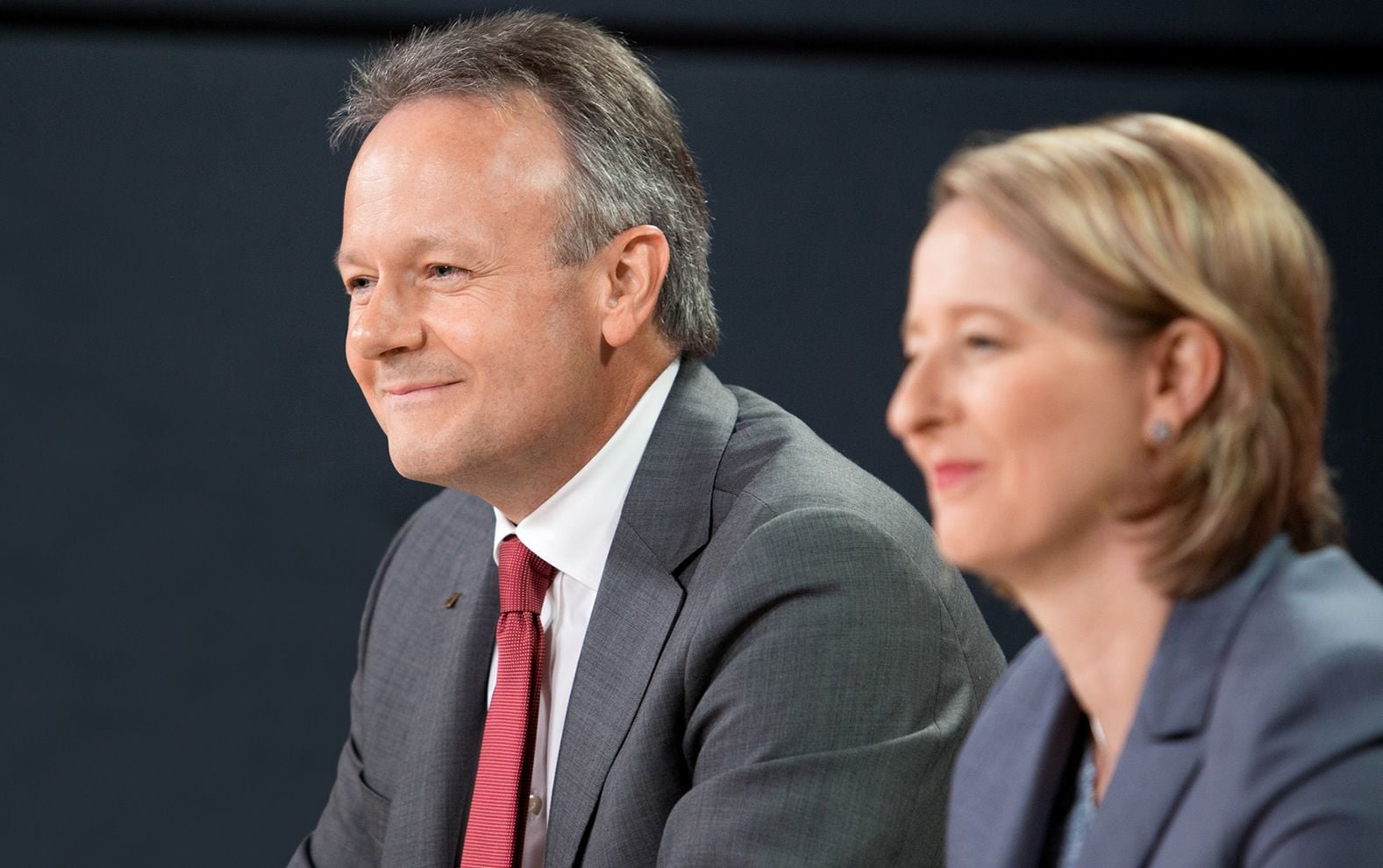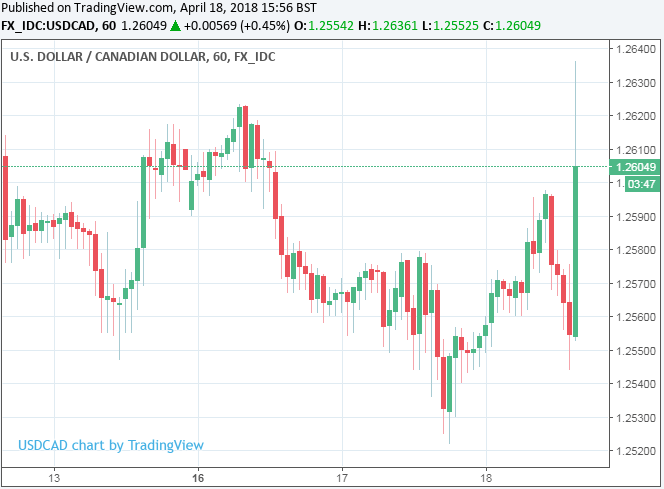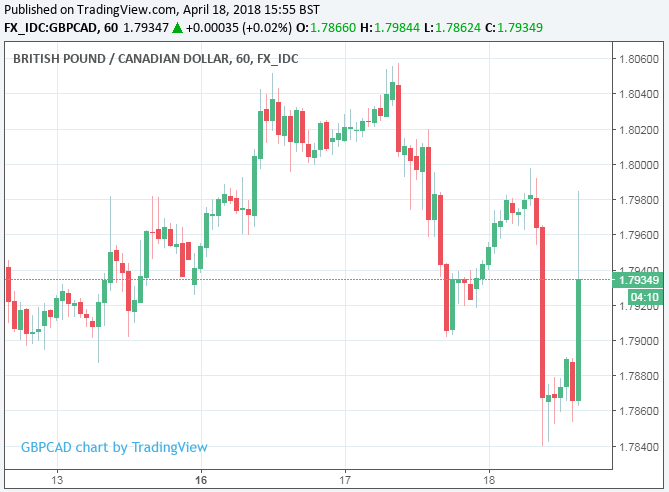Canadian Dollar Slides after Bank of Canada Holds Interest Rate at 1.25% and Warns about Trade Risks
- Written by: James Skinner
-BoC holds key rate at 1.25% as expected by markets.
-Uncertainties over NAFTA and international trade key to outlook.
-Canadian Dollar trades lower across the board following announcement.

© Bank of Canada
The Canadian Dollar fell against its developed world rivals during the noon session Wednesday as markets responded to a decision by the Bank of Canada to leave its interest rate unchanged in April.
The Bank of Canada held its rate at 1.25%, as was largely expected by markets, and suggested that monetary policy committee members feel they have enough time to be patient before raising rates again.
Wednesday's decision comes even after the February month saw Canadian inflation measures all rise to or above the BoC's target, although Poloz said Wednesday many of the factors contributing to this rise were "transitory".
Countering this apparently benign view of domestic inflation pressures, the governor noted labour capacity constraints that have hit some Canadian industries and recent increases in wage growth.
"The Bank of Canada statement struck a fairly balanced tone today, and one that still leaves us comfortable with expecting the next hike to come in July," says Andrew Grantham, an economist at CIBC Capital Markets.
All developed world central banks have mandates to adapt their monetary policies in order to ensure that domestic inflation remains stable and close to its target level, whatever that may be for the bank in question. So interest rates will normally only rise when inflation approaches its target level or shows signs of making a sustained overshoot.
"In saying that moves higher in core inflation were consistent with an economy operating with "little slack" the Bank hints that another rate hike will be coming in the months ahead. However, in still stressing that inflation is higher than previously expected due to "transitory" impacts such as gasoline and minimum wage, they're clearly in no rush still regarding the pace of future increases," Grantham adds.
Canadian inflation rose above the BoC's 2% target in February, coming in at 2.2%, while it is forecast to rise to 2.5% this Friday when the numbers for March are released. In addition, all of the BoC's so called "core" measures of inflation are now either at 2% or are very close to it. This supports Grantham and the CIBC team's call that another interest rate rise may only be a couple of months away.
"Some progress has been made on the key issues being watched closely by Governing Council, particularly the dynamics of inflation and wage growth. This progress reinforces Governing Council’s view that higher interest rates will be warranted over time, although some monetary policy accommodation will still be needed to keep inflation on target," Poloz says, in the BoC's statement.

Above: USD/CAD rate shown at hourly intervals.
The USD/CAD rate rose 0.48% to 1.2617 in response to the announcement while the Pound-to-Canadian-Dollar rate pared its earlier loss to trade 0.01% higher at 1.7953 for the session. The Canadian Dollar also slipped lower against all of its other developed world rivals.

Above: Pound-to-Canadian-Dollar rate shown at hourly intervals.
Canadian Growth, NAFTA, in Focus
Separately, Poloz and the BoC noted a slower pace of Canadian GDP growth during the first quarter, which is unlikely to surprise to economy-watchers given the economy contracted in January for the second time since the BoC began to raise rates in July 2017.
Nonetheless, the governor still gave an upbeat view of the outlook for both domestic and global economies during the quarters ahead. Albeit one that was tempered by references to "uncertainty about trade policies", which are clear denotations of concern about the future of NAFTA and interenational trade more broadly.
"The Bank anticipates that Canadian exports will strengthen as foreign demand increases, but not sufficiently to recover the ground lost during recent quarters," Poloz says. "Both exports and investment are being held back by ongoing competitiveness challenges and uncertainty about trade policies."
Tensions and fears over international trade have risen in recent weeks after the US and China were seen sliding into a tit-for-tat series of protectionist actions against eachother's economies, involving tariffs, which have prompted concerns over a possible "trade war" between the world's two largest economies.
In addition to this, it is not yet know whether the North American Free Trade Agreement will survive the Trump presidency, even if fears over the pact have diminished in recent weeks. This is important given analysts have previously estimated that a NAFTA withdrawal by the US could hit the Canadian economy hard and see the Loonie fall by as much as 20%.
A New York Times report at the beginning of April claimed Mexican economy ministers are “very convinced” a deal to save the NAFTA pact can be reached soon while US Treasury Secretary Steven Mnuchin also told reporters that negotiators are making “good progress”. Canada’s Foreign Minister, Chrystia Freeland, was more coy when she told the media “We have always said we’re going to take the time it takes to get a good deal.”
President Donald Trump's dislike of the NAFTA agreement is well known after he described it as "the worst deal in history" when on the campaign trail. Canada, Mexico and the US had been attempting to renegotiate it for almost a year, without any meaningful progress, until recent weeks when the White House was reported to have offered a key concession and begun pushing for a token agreement to be concluded some time this month.
Advertisement
Get up to 5% more foreign exchange by using a specialist provider to get closer to the real market rate and avoid the gaping spreads charged by your bank when providing currency. Learn more here.




